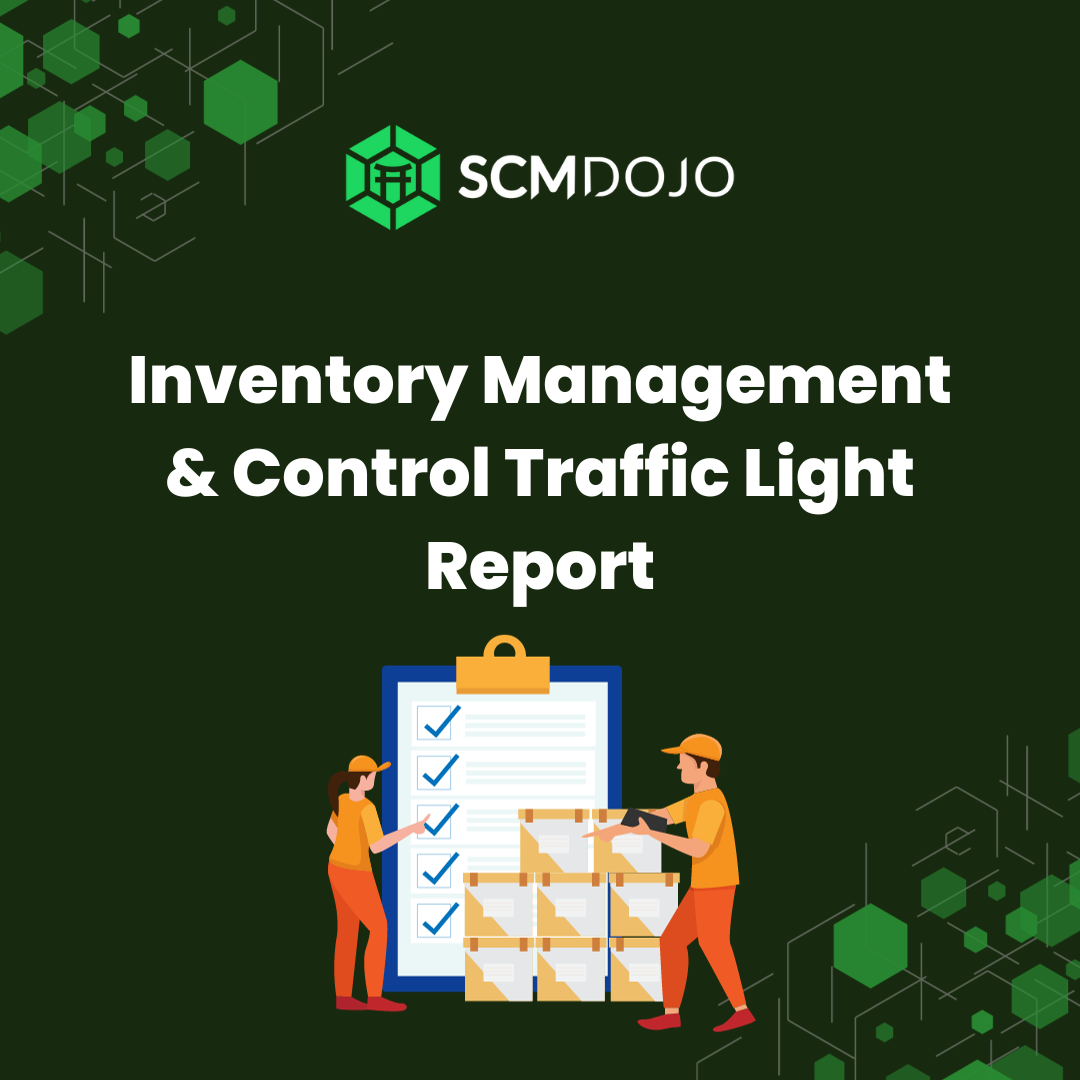In the world of manufacturing and maintenance, effective spare parts management is essential for maximizing equipment uptime and reducing costs. Making sure the correct spare parts are easily accessible when needed can greatly boost profits and how well it operates. Yet, handling spare parts can be tricky and needs careful planning and execution.
In this detailed guide, you’ll delve into the most effective ways to manage spare parts. From making sure you have the right amount in stock to setting up programs to prevent issues to saving on costs, here are practical tips to help you make your spare parts management process smoother.
Ready to enhance your spare parts management? Let’s explore the key strategies to ensure your maintenance operations run smoothly. This article covers:
- Importance of effective spare parts management
- Strategic Operations for Spare Parts Management
- Effective Inventory Control Techniques
- Comprehensive Knowledge of Lead Times Across Various Parts
- Utilizing technology for spare parts management
- KPIs for measuring spare parts management effectiveness
- Implementing a preventive maintenance program and enhancing security measures
Importance of Effective Spare Parts Management
In manufacturing and maintenance, managing spare parts well means more than just having them available. It’s a smart guarantee that the right parts are easy to get, making sure equipment doesn’t stay idle for long and costs stay low. This directly affects how well a company does, avoiding problems and making a positive impact on profits. As you look at why this is so important, you see the smart planning that helps businesses run at their best and keep making money.
1. Maximizing Equipment Uptime:
Effective spare parts management is crucial for keeping machines running smoothly. When the right spare parts are readily available, equipment downtime is minimized. This ensures that production processes remain uninterrupted, maximizing overall operational efficiency.
2. Minimizing Operational Costs:
Strategic spare parts management helps cut down on extra expenses. By having the correct parts on hand, you can avoid costly downtimes and disruptions, ultimately reducing operational costs.
3. Ensuring Timely Repairs:
Having a well-managed inventory of spare parts ensures quick and timely repairs. This prevents prolonged equipment breakdowns, allowing for swift resolutions and production delays are reduced.
4. Preventing Production Disruptions:
Strategic spare parts planning prevents unexpected breakdowns, averting disruptions in production. This approach contributes to maintaining a smooth workflow and prevents costly interruptions.
5. Enhancing Profitability:
Efficient spare parts management directly impacts a company’s bottom line. By minimizing downtime, reducing operational costs, and ensuring consistent production, you can enhance overall profitability.
6. Improving Employee Productivity:
A well-managed spare parts inventory ensures that employees can swiftly access the components they need. This improves overall productivity as it reduces the time spent searching for or waiting on critical spare parts, allowing employees to focus on their tasks efficiently.
7. Optimizing Equipment Lifespan:
Regular and timely access to spare parts facilitates proper maintenance and repairs. This, in turn, extends the lifespan of equipment. Effective spare parts management contributes to the longevity of machinery, maximizing the return on investment for these assets.
8. Enhancing Customer Satisfaction:
Consistent production and timely deliveries are key to satisfying customer demands. Efficient spare parts management ensures that production remains on schedule, preventing delays in delivering products to customers.
Strategic Operations for Spare Parts Management
When managing spare parts, you can either react to problems as they come or predict and prevent them. Even though reacting is sometimes needed, the key to effective maintenance management is dealing with potential issues before they become a problem.
Considerations for efficient inventory management within the operational strategy for spare parts include:
- Data Collection and Analysis: Gather and analyze pertinent data to enhance your business strategy in spare parts management.
- Comprehensive Operational Scope: Addressing significant issues within the entire operational scope of the part management process to ensure long-term efficiency.
- Detection of Failure Patterns: Identify patterns of failure that may expose less apparent problems.
- Predictive Management Utilization: Utilize predictive management techniques to optimize resource utilization, cut costs, and minimize the time required for issue resolution.
Effective Inventory Control Techniques
In the intricate dance of supply chain management, mastering effective inventory control is akin to conducting a symphony of precision. These techniques not only ensure optimal stock levels but also safeguard against financial losses, dead stock, and spoilage. From the strategic implementation of FIFO principles to establishing annual stocktaking procedures, this exploration dives into the tried-and-true inventory control techniques that stand as pillars in the realm of seamless business operations. Join us on a journey through these techniques, each a keynote contributing to the harmony of efficient inventory management.
First-In-First-Out (FIFO):
Implement the FIFO principle to ensure the timely management of temporary inventory, crucial for preventing financial losses and maintaining operational efficiency. Adhere to FIFO for non-perishable items to prevent their depreciation due to evolving designs and features, ensuring the preservation of inventory value.
Establishing Annual Stocking Procedure:
Define optimal re-order thresholds meticulously, ensuring a well-calibrated stocking procedure that anticipates demand variations and minimizes carrying costs. Determine average inventory levels as part of the annual stocking procedure, contributing to cost containment through effective inventory management.
Optimized Purchasing Procedures:
Implement optimized purchasing procedures by identifying fast-selling items, ensuring timely orders, and preventing overstocking of slow-moving products. Adjust stock levels based on demand patterns, utilizing inventory control templates to efficiently plan orders and optimize inventory turnover.
Regular Auditing/Cycle Counting:
Maintain accuracy through regular audits, ensuring precision in inventory data management and responding promptly to any discrepancies. Deploy frequent spot checks selectively to supplement comprehensive inventories, offering a reasonable response to recurring anomalies or surplus items.
Inventory Management and Control Report:
Make a report to control your inventory using a simple Traffic Light Color system. This helps you quickly see if you have too much or too little stock. The report makes it easy to decide how to ship things and get input from your planning teams and suppliers. It’s like having a traffic light for your inventory!
Free Inventory Management And Control Traffic Light Report.xlsx
Perpetual Inventory System:
Implement an automated perpetual inventory system with ERP or WMS technologies for precise tracking of stock quantity, ensuring perpetual accuracy. Integrate ERP and WMS with an Inventory Optimization system for seamless business operations, emphasizing the pivotal role of optimization programming in inventory control efficiency.
Budgeting the Inventory Controls:
Anticipate and plan effectively with an annual inventory budget, encompassing various expenses such as ownership, carrying, and operational costs. Utilize inventory control templates to guide budget allocation, ensuring a well-structured financial plan for optimal inventory management.
Read more on: 10 Inventory Control Techniques That Are Evergreen at our website SCMDOJO!
Comprehensive Knowledge of Lead Times Across Various Parts
In the realm of spare parts management, a profound grasp of lead times empowers informed decision-making, allowing plant managers to prioritize stocking plans and consider alternative components during crises. Discover how this knowledge transforms spare parts management into a proactive and resilient endeavor.
- Risk Mitigation Strategies: Utilize knowledge of lead times to develop effective risk mitigation strategies, allowing for proactive measures in the face of potential delays or shortages.
- Optimizing Stocking Plans: Leverage the understanding of lead times to optimize stocking plans, ensuring a well-balanced inventory that aligns with the criticality of each part.
- Integration with Production Schedules: Integrate lead time information with production schedules to enhance overall operational efficiency, aligning spare parts availability with the demands of the production process.
- Vendor Collaboration for Expedited Delivery: Collaborate with vendors based on lead time insights, fostering relationships that facilitate expedited deliveries and minimize the impact of unforeseen disruptions.
Read more on: Lead Time Definition – How to Calculate & Reduce it? at our website SCMDOJO!
Utilizing Technology for Spare Parts Management
Using technology in the modern era makes managing spare parts easier and more efficient. Advanced systems and tools not only make things run smoother but also make them more accurate and responsive. When you use technology to keep track of inventory, automatically order more when needed, and monitor things in real time, you manage spare parts accurately. This helps you avoid mistakes and stay flexible to the changing needs of the plant.
On-Demand Solutions with 3D Printing
Enhance efficiency by integrating in-house digital fabrication tools like 3D printing, enabling on-demand production strategies for spare parts.
Reducing Costs and Lead Times
Explore the benefits of pairing technology with inventory management to cut costs, minimize lead times, and optimize resource allocation.
Enhancing Resilience
Strengthen your operations by leveraging technology to improve resilience, ensuring a smoother response to unforeseen challenges and demands.
Minimizing Downtime
Utilize digital solutions to minimize downtime, ensuring that your manufacturing processes run seamlessly with reduced disruptions.
Formlabs: Advanced 3D Printing Solutions
Discover Formlabs’ cutting-edge SLA and SLS 3D printers, coupled with industrial-grade materials, tailored specifically for efficient spare and replacement part manufacturing.
KPIs for Measuring Spare Parts Management Effectiveness
In the world of spare parts management, Key Performance Indicators (KPIs) act like guideposts, helping assess how well things are working. Important KPIs, like how often parts are used, how quickly orders are completed, and overall cost-effectiveness, give clear numbers about how well things are going. Checking these numbers regularly not only shows how things are now but also highlights areas to make better. This helps plant managers improve their strategies and keep making spare parts management better over time.
Inventory Turnover:
Measure the frequency at which spare parts are used and replenished. This indicates the efficiency of inventory management and resource utilization.
Order Fulfillment Time:
Evaluate the time taken from the initiation of a spare parts order to its successful fulfillment. This gauges the responsiveness and effectiveness of the procurement process.
Overall Cost-Effectiveness:
Assess the cost-effectiveness of spare parts management by considering factors such as procurement costs, holding costs, and the overall impact on operational expenses.
Stockout Rate:
Monitor the frequency of stockouts. This indicates the adequacy of stock levels and the ability to meet demands promptly without causing disruptions.
Supplier Performance:
Evaluate the performance of vendors by assessing factors like delivery timeliness, product quality, and responsiveness. This is crucial for maintaining a reliable supply chain.
Accuracy of Inventory Records:
Measure the accuracy of inventory records by comparing recorded stock levels with physical counts. This ensures data precision and minimizes errors in spare parts management.
Emergency Response Time:
Assess the efficiency of emergency response by evaluating the time taken to procure. Deploy critical spare parts during unplanned downtime or equipment failures.
Lifecycle Cost Analysis:
Conduct a comprehensive analysis of the lifecycle costs of spare parts, considering acquisition, maintenance, and replacement expenses to optimize overall cost-effectiveness.
Obsolete Inventory Percentage:
Monitor the percentage of obsolete inventory in stock. This identifies items that are no longer in use or relevant and ensures a lean and efficient spare parts inventory.
Equipment Uptime:
Measure the overall uptime by ensuring that critical spare parts are available when needed. This minimizes downtime and optimizes operational efficiency.
Read more about Excess Inventory: Causes, Consequences and How to Avoid it? at our website SCMDOJO!
Implementing a Preventive Maintenance Program and Enhancing Security Measures
A planned maintenance program, scheduled based on how equipment performs, helps reduce the chance of unexpected breakdowns. At the same time, improving security for storing parts makes sure the inventory is safe. This involves setting rules for who can access parts, using physical security methods, and having surveillance systems. This also means making sure spare parts are used well, maintenance runs smoothly, and the inventory stays protected.
- Scheduled Maintenance Tasks: Implement a preventive maintenance program with scheduled tasks based on equipment performance. This extends the lifespan of machinery and minimizes the risk of unplanned downtime.
- Optimal Utilization of Spare Parts: Ensure that spare parts are put to optimal use by integrating them into preventive maintenance schedules. This contributes to the overall efficiency and reliability of equipment.
- Restricted Access Policies: Adopt policies limiting access to parts inventories. This prevents unauthorized personnel from compromising the accuracy and security of spare parts.
- Surveillance Systems Implementation: Enhance security measures by implementing surveillance systems in parts storage areas. This provides an additional layer of protection against theft or unauthorized access.
Conclusion: Achieving Success in Spare Parts Management
In summary, effective spare parts management goes beyond just having the parts available. It involves smart planning, good control of inventory, using technology, and taking steps. By adopting these important strategies, plant managers can improve their spare parts management. This ensures that maintenance runs efficiently, and it does so in a way that saves money and is very efficient. Looking ahead, using advanced technology, and inventory control systems will set the plant up for success in the world of manufacturing and maintenance.
About Author:
Dr. Muddassir Ahmed has received a Ph.D. in Management Science from Lancaster University Management School, an MSc. in Management of Production from Chalmers University of Technology, Göteborg, Sweden Muddassir is a Six Sigma Black Belt, and has founded scmdojo.com – with moto “Supply Chain Knowledge and Solutions for Everyone”.
SCMDOJO was created to enable supply chain professionals to solve the problems they face in their jobs & business. The enablement will come by providing relevant and best-in-class knowledge banks (ebooks, guides, training & talks, courses, videos) and self-assessment tools to solve the problems faced by the supply chain professionals.
Hire the Expert Now or Start a Chat!
Recommended Reading











 The WMS proves to be a great tool for managing the entire activities of a warehouse, effortlessly handling tasks from inventory management, replenishments, receiving, put-away, picking, packing, and shipping, to tracking the logistics system……
The WMS proves to be a great tool for managing the entire activities of a warehouse, effortlessly handling tasks from inventory management, replenishments, receiving, put-away, picking, packing, and shipping, to tracking the logistics system……
